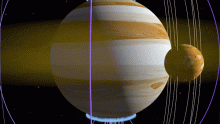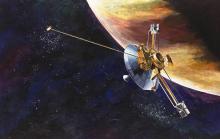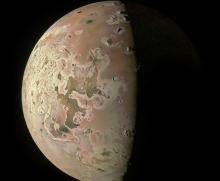Listen to today's episode of StarDate on the web the same day it airs in high-quality streaming audio without any extra ads or announcements. Choose a $8 one-month pass, or listen every day for a year for just $30.
You are here
Second Storm
The second-biggest storm on Jupiter has an amazing history. It formed from the merger of three smaller storms. It turned bright red a few years later, then faded to white. And it’s survived several close encounters with Jupiter’s biggest storm.
Oval BA started forming in 1998, when two storms merged. A third joined with them two years later. The combined storm is more than half the size of Earth. Its winds spiral in the opposite direction from hurricanes here on Earth, at speeds that are up to twice as fast.
In 2005, Oval BA turned red. Since Jupiter’s biggest storm is the Great Red Spot, scientists began calling the smaller one the Little Red Spot or Red Junior. But while the great spot has stayed red for more than a century and a half, Red Junior soon began fading. By a few years ago, it had turned white. And scientists are still trying to figure out what caused both of its color changes.
Oval BA passes just south of the Great Red Spot every couple of years. During an early encounter, scientists thought the great spot might gobble up the smaller storm. Instead, though, it’s survived every encounter, including one last summer — continuing its travels through Jupiter’s amazing atmosphere.
Jupiter is low in the southeast at first light now. The solar system’s biggest planet looks like a brilliant star. The Great Red Spot is easy to spot through small telescopes, but Oval BA takes a bit more work.





